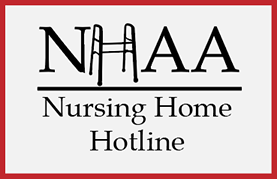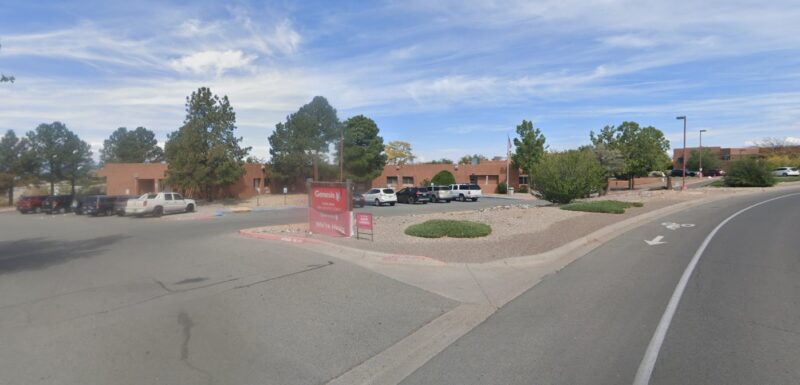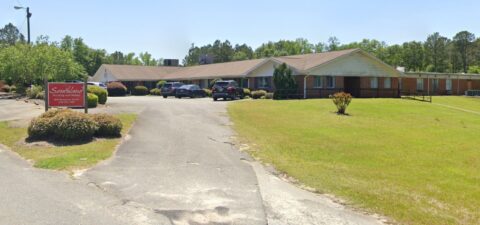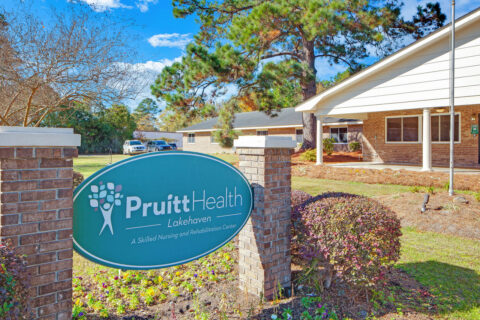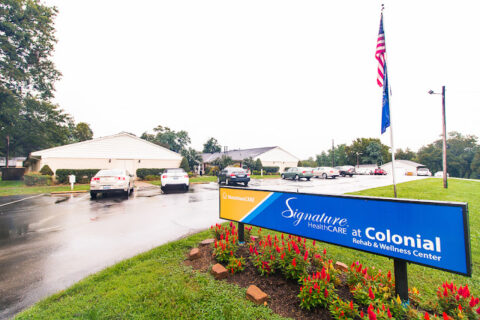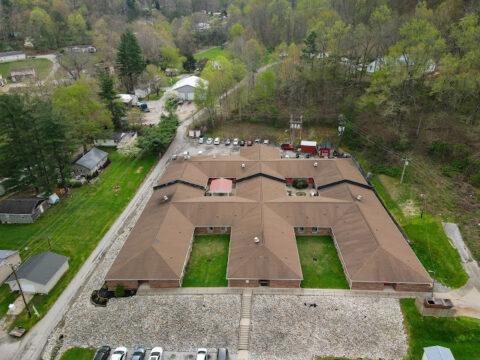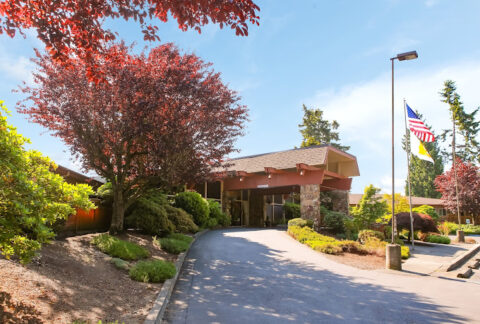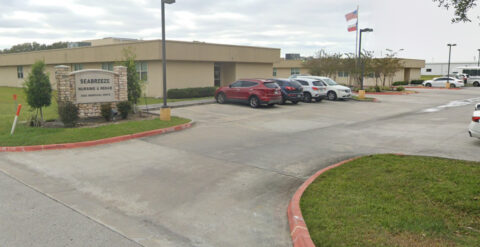State Findings:
Ensure that a nursing home area is free from accident hazards and provides adequate supervision to prevent accidents.
**NOTE- TERMS IN BRACKETS HAVE BEEN EDITED TO PROTECT CONFIDENTIALITY** 38450
Based on record review and interview, the facility staff failed to prevent an accident when staff did not appropriately transfer 1 (R #2) of 1 (R #2) resident reviewed for accidents.
This deficient practice likely resulted in R #2’s fractured knee.
The findings are: A. Record review of the facility’s Complaint Narrative Investigation Report (also called a five day report) revealed:
– Resident had a history of dementia, diabetes, hemiplegia (paralysis of the arm, leg, and trunk on the same side of the body) following cerebral infarction (an area of dead tissue in the brain resulting from a blockage or narrowing in the arteries supplying blood and oxygen to the brain). R #2 had a Brief Interview for Mental Status (BIMS; a screening for cognitive impairment) score of 14, cognitively intact.
– The facility arranged a Telehealth visit by the provider which resulted in a request for x-ray. The facility had mobile x-ray provider (a rolling x-ray machine that comes to the bedside to take x-ray pictures) come to the facility and x-ray the resident’s left knee area. Initial x-rays indicated the resident did not have a leg fracture but were inconclusive. The facility then sent the resident to acute hospital for additional x-rays, which were positive for a fracture of left lower femur. R #2 underwent surgery to repair the fracture.
B. Record review of R #2’s face sheet revealed she was admitted to the facility on [DATE] with multiple diagnoses including:
– Hemiplegia (partial or complete paralysis of one side of the body) and hemiparesis (partial or complete lack of muscle tone and control on one side of the body) following cerebral infarction.
– Dementia (a chronic, progressive decline of mental abilities and memory).
– Malignant neoplasm (cancer) of the skin.
C. Record review of R #2’s care plan, dated 10/07/21, revealed R #2 required extensive assistance for activities of daily living (ADL; every day needs such as bathing, dressing, eating) care, extensive assistance with dressing, and staff to stand on weaker left side when assisting with ADLs or other activities.
D. Record review of R #2’s daily care notes revealed the following:
– Dated 07/06/24, R #2 complained of left knee pain. Telehealth (computer assisted video visit with a licensed provider) visit with provider. Order for x-ray of left knee.
-Dated 07/06/24, R #2’s daughter brought R #2 to the nurses station, because she complained of knee pain. Daughter stated to nurse that R #2’s knee was hurt while being changed and transferred by a Certified Nurses Aide (CNA). PRN (Pro Re Nata-medication given as needed or requested) pain reliever given and resident assisted to bed. X-ray obtained within facility.
-Dated 07/07/24, R #2 possible left distal (away from) femur fracture. Sent to emergency room (ER) for evaluation.
– Dated 07/10/24, follow-up visit. R #2 stated to provider she never fell . She stated her leg was
overextended when she was transferred from her wheelchair to her bed. Hospital Course (treatment and services provided while in the hospital) open reduction internal fixation (ORIF; surgical repair of a broken bone using screws and plates to stabilize a broken bone).
E. Record review of a written statement provided by CNA #1, dated 07/06/24, revealed CNA #1 stated she assisted R #2 with her brief change. While transferring R #2 from wheelchair to bed, R #2 told CNA #1 that her (R #2’s) foot had got caught. CNA #1’s statement stated R #2 did not tell her of any pain or discomfort so she continued with the brief change and assisted R #2 back to her wheelchair. CNA #1’s statement did not indicate she reported any incident to the nurse or that a nurse was called to check and assess R #2.
F. On 08/07/24 at 11:05 am during interview with R #2, she stated she was getting ready to leave the facility to attend a family function on 07/06/24. She stated her daughter was coming to pick her up. She stated she asked CNA #1 to change her brief, because it was soiled. R #2 stated CNA #1 was upset, and CNA #1 told her (R #2) she had too much work to do and too many residents to change. R #2 was sitting in her wheelchair. CNA #1 bent down and picked R #2 up by placing arms around her chest from the front. CNA #1 then transferred R #2 to her bed and had her sitting on the side of the bed. CNA #1 then placed R #2’s head on the bed at the foot of the bed and lifted her feet to the head of the bed. R #2 stated that CNA #1 was now standing to her left side. R #2 stated that when CNA #1 did this, her (R #2) feet became tangled and her left leg was trapped. R #2 stated she felt intense pain and loudly yelled out. R #2 stated CNA #1 then straightened her legs out and changed her brief. R #2 stated she was in pain during the change. She stated CNA #1 assisted her back to her wheelchair. R #2 stated her daughter arrived, and R #2 told her daughter
her left knee was very painful. R #2 stated her daughter propelled her in her wheelchair to the nurses station and complained to the nurse about R #2’s knee pain. R #2 stated she was x-rayed and eventually sent to hospital where she had an operation to repair her fractured knee. R #2 stated she returned to the facility a few days later.
G. On 08/07/24 at 11:10 am during interview of R #6, she stated she was roommate with R #2 on 07/06/24. She stated she did not see what happened, but she did hear R #2 assisted by CNA #1 from wheelchair to bed. R #6 stated she heard R #2 yell out loudly in pain as she was moved by CNA #1.
H. On 08/07/24 at 2:20 pm during interview with Administrator (ADM), he stated he conducted an investigation of this incident. The ADM stated all CNAs were trained to transfer residents from one position to another. He stated this training included the use of a gait belt (a large belt that is placed around the waist of a person that allows them to be lifted and assisted to change position from standing to sitting and sitting to standing) and properly supporting the resident’s legs when moving from sitting to lying position, so their legs did not become crossed or tangled. The ADM stated CNA #1 admitted to him that she did not used proper technique and training when she transferred R #2 from the wheelchair to the bed. The ADM stated CNA #1 was discharged from her employment with the facility as a result of the investigation.
I. On 08/07/24 at 2:40 pm, an attempt was made to contact CNA #1 by telephone, but the CNA did not answer or respond back.
J. On 08/07/24 at 3:45 pm during interview with CNA #2, he stated he was employed with the facility as a CNA for more than a year. He stated he participated in annual trainings regarding transfers (movement from one position to another i.e.: sitting to standing/standing to sitting/right or left) of residents. He stated his training required staff to utilize a gait belt when assisting a resident to transfer. He stated he was trained to use the gait belt to lift the resident from sitting to standing, hold the gait belt when moving the resident, and to use the gait belt to assist the resident to change from a standing to sitting position. He stated he was trained to brace the resident’s back and neck while also lifting the knees to place the resident into a lying position. He stated the support of the resident’s neck and knees was to keep the body aligned and prevent legs from
getting tangled and twisted.
Your Experience Matters
...and we want to hear it.
NHAA is here to assist families, residents, and the community by sounding the alarm on issues like those found above. This nursing home and many others across the country are cited for abuse and neglect.
If you have or had a loved one living in this nursing home or any other nursing home where you suspect any form of abuse or neglect, contact us immediately.
We have helped many already and we can help you and your loved one as well by filing a state complaint, hiring a specialized nursing home attorney or helping you find a more suitable location for your loved one.
You can make a difference, even if your loved one has already passed away.
Please give us a call at 1-800-645-5262 or fill out our form detailing your experience.
Personal Note from NHA-Advocates
NHAA shares with all the families of loved ones who are confined to nursing homes the pain and anguish of putting them in the care of someone else. We expect our loved ones to be treated with dignity and honor in the homes we place them. We cannot emphasize enough to family members of nursing home residents; frequent visits are essential to our loved ones’ well-being and safety.
If you are struggling and upset, click here to understand your options, or contact us through our contact form or call our toll free hot line number: 1-800-645-5262.
